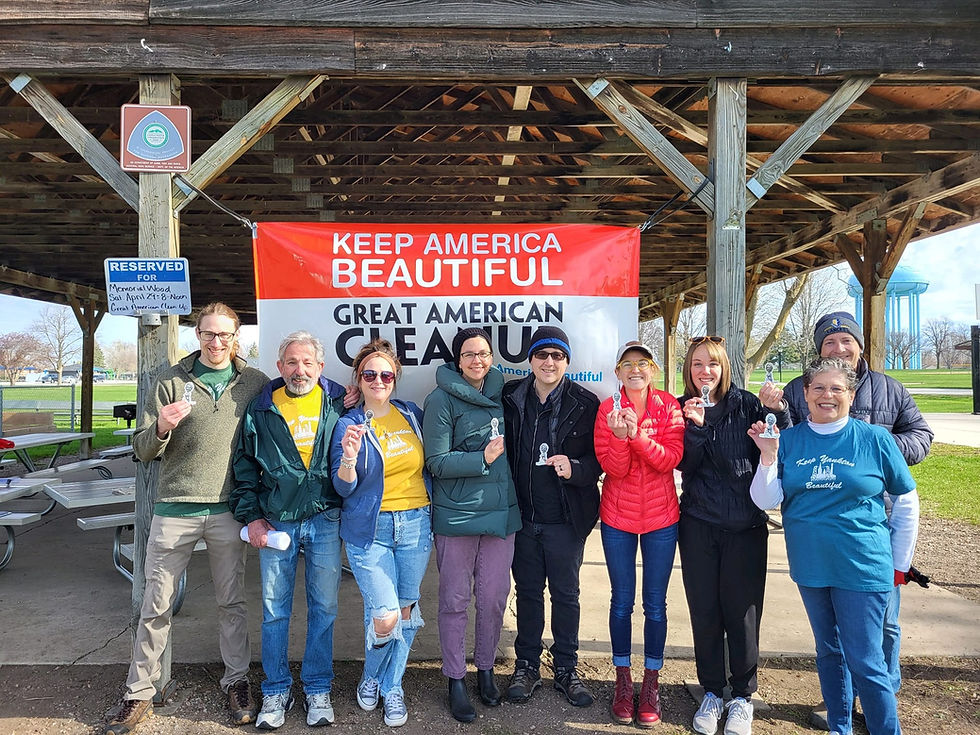Recycling in Retrospect
- Keep Yankton Beautiful
- Apr 14, 2020
- 3 min read
My parents were recycling way before it was cool to recycle.
There was a ritual to the way we recycled, and it took half my lifetime to realize not every family had five options when disposing of any given item. Long before I was toddling around the farmyard in the mid-90s, my parents had developed an impressively green method for dealing with waste of any kind. I still vividly recall the vexation that inevitably ensued whenever we had friends to visit:
“Where should I put this?”
“Under the sink.”
That was, and still is, the answer. Upon opening the worn cupboard doors, inhabitants and guests alike would encounter five receptacles: first, a ratty trash can for all your average burnable items, like the rare candy bar wrapper or cereal bag. The next container housed the coveted nickel cans: growing up in Iowa with a big family, my mother was ever aware that the stamp on the can promised a 5-cent return reward. The third container—for all other recyclable items offering no monetary recompense—was a long bin tucked behind the first two; this was where all the empty, meticulously rinsed refried bean cans and crumpled cracker boxes were laid to rest before being resurrected and re-purposed in the course of recycling.
Next up, an old one-gallon ice cream bucket doubled as the compost pail, a catchall for organic matter such as coffee grounds and potato peels. Whatever ended up in this pail was dumped onto the compost pile and given new life in my mother’s expansive garden. Last up, fifth in the lineup, was a gnarly old tub with the words “Large Curd Cottage Cheese” mostly rubbed off from years of use. This tub contained chunks of burnt toast, bits of moldy cheese, the oatmeal that spilled on the floor, and any other variety of edible but unappealing food scraps. This was divvied up among the voracious tribe of barn cats, loyal farm dogs, and omnivorous chickens.

Even though this vivid memory of the options under the kitchen sink takes me back a quarter century, not much has changed when it comes to my mother’s habits. I still catch her digging through the trash after a family gathering, fishing out all her beloved nickel cans. To this day, she’s more dedicated than the average environmentalist: she washes out all her Ziploc bags and reuses them; she wipes the lasagna particles off her aluminum foil and folds it up into the drawer to be used again. On a recent road trip, I realized Mom’s dedication doesn’t end in Iowa—she keeps a special bag in her vehicle for recyclable items, to sort through when she gets back home again.
While I admittedly don’t wash out and reuse every plastic bag, I also don’t buy single use resealable bags anymore. A few months ago, I invested in a handful of reusable zipper bags and have never looked back. Whether I’m packing a sandwich or snacks, storing leftovers or freezing excess, these reusable bags are reused daily! In lieu of plastic wrap, I’ve built up a handsome collection of silicone lids, ranging from a few inches in diameter to one large enough to cover a sizable mixing bowl. Whether I’m storing something in the fridge or need to quickly reheat a dish in the microwave, I’m pleased to be living a cling wrap-free lifestyle.
There are many ways we can be greener every day. If you use straws regularly, you can easily invest in a set of reusable straws and a handy brush. If you are accustomed to carrying water with you, consider swapping those single use plastic bottles for a metal or glass water bottle. There are endless options out there! Napkins are a part of our daily life…but so is laundry! Pick up a pack of cloth napkins and enjoy the satisfying knowledge that you’re living greener every meal you eat.
So while I’m living in 2020 and not quite as hardcore as my parents were in the 90s, I still consider the items I bring into my home and strive to reduce waste by avoiding the purchase of single use items whenever possible. South Dakota was recently ranked as the 9th greenest state based on our eco-friendly behaviors, climate change contributions, and environmental quality. Channel your inner green person and join me in my mission to rank even higher in 2020!
-Sarah Gehm





Comments